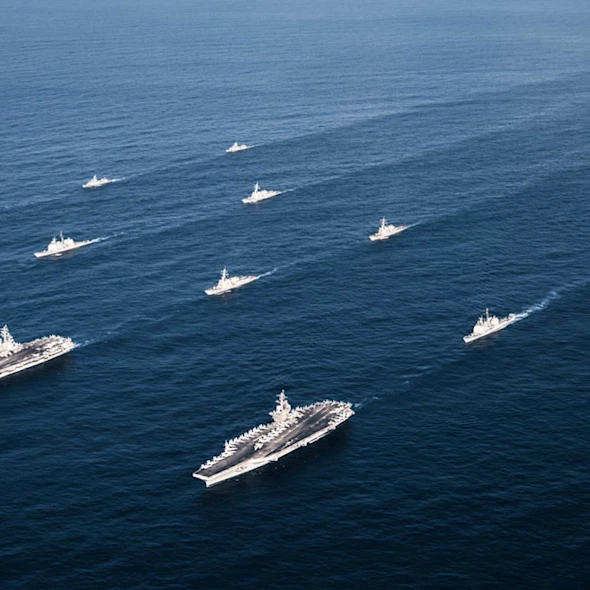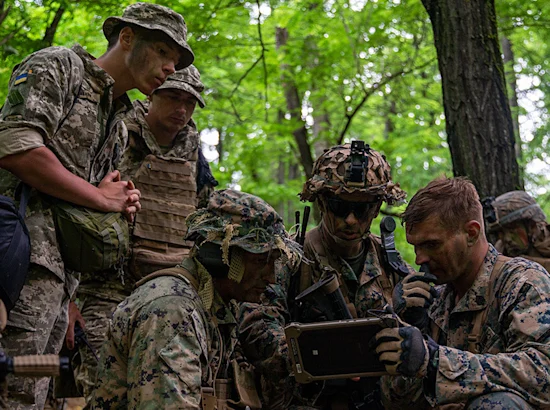The modernization of its current and future fleets is a critical priority for the U.S. Navy. GDIT has been supporting the Navy in this continuous mission for nearly a decade, most recently expanding our support to include the Ship and Air Command, Control, Communication, Computers, Combat, Intelligence, Surveillance, and Reconnaissance (C5ISR) Systems Support (SACSS) contract. Our work on the SACSS program involves performing pier-side ship modernization services that enable the Navy to keep its current vessels operational while it simultaneously adds additional vessels to the fleet.
We asked GDIT Vice President Nancy Graf and Ship and Air Integrated Warfare Senior Program Director Jim Conway, who lead the SACSS program, to talk with us about the work and its strategic importance to the Navy. Here’s what they had to say:
What is the SACSS program?
Nancy: Under this contract, GDIT is helping the Navy modernize its ships and increase the readiness of its fleet. We are also supporting other DoD ship and air platforms and systems as well. The Navy wants to have a fleet of more than 350 ships; it’s got about 300 today and ships take years to build and can costs billions of dollars. So, the Navy is working to modernize what it has, and that’s the work we do. We update ship combat systems quickly and efficiently, while the ship is still in the water.
Jim: That’s right. We’re integrating and installing programs of record. Our work also includes logistics, engineering, program management, but most of what we do is in support of waterfront installation efforts. We're not developing the radar or the guns, as examples, we’re the on-ship installers and the integrators. We do physical hardware infrastructure connections and then we'll do a ship operational verification testing and turn things over to the customer.
Sounds like important but complex work. What are some of the unique challenges associated with it?
Jim: Well, ships move. They’re not like a datacenters or things that are going to be in one place all the time. We have to rapidly react and install these systems of record when – and where – they’re needed. Additionally, we do these installs but we also fabricate. As an example, a sponson is basically a “shelf” on the exterior of a ship that we build and then weld to the side of a ship. They weigh up to 16 tons and they essentially extend the surface of the ship. You can mount weapons systems or other devices on them. So, we hire tradesmen like welders and electricians in addition to technical teams to do our work.
Nancy: Another important piece of the puzzle is that all ships, just like aircraft, are scheduled for regular maintenance. But if there is an upgraded combat system that allows you to target better, as an example, or other available system upgrades that increase the ability for warfighters to know more about their targets, sailors shouldn’t have to wait until a ship’s scheduled maintenance for those upgrades. By doing a pier-side modernization, we're able to get that kind of technology on the ships faster and more efficiently and more cost-effectively and also advance national security interests. A lot of us remember the U.S.S. Cole. It was attacked in 2000 by a small boat, and the Cole was badly damaged. The Navy has since deployed the MK-38 gun as a means to increase ship-board self-defense against small boat threats. You can fire it from the bridge and prevent a boat like the one that damaged the Cole from ever getting close. So, that’s an example of why the continuous fleet modernization work that we do at GDIT is important and will continue to be important, and this work supports that.
Why was GDIT chosen for this project?
Nancy: We brought, with Jim and his team, an expertise and a discipline to the work. We’ve always met requirements and we’ve grown as they’ve grown. We have the people to man the work and get to the ships when we’re needed. We hire from within a robust network and we’re able to react to changing needs and environments.
Jim: Yes, we’ve been doing ship modification and modernization work with the Navy since 2012, and this most recent SACSS win is an extension and expansion of that work. We know this space; we’ve been working with shipyards to perform various upgrades on rapid timelines, almost like surgical strikes. We have always been very responsive, and very quick to react to a need. With work like this, speed is incredibly important – because it’s all about how quickly you can help protect the ships and the people who are on them.
How are we helping the Navy achieve its modernization objectives?
Jim: We provide expertise, like Nancy said, our team members have been doing this work for several years. It involves hiring people and managing programs efficiently so we can bring customers what they need. We do lots of upfront planning and Earned Value Management assessments to drive efficiencies and structure wherever we can.
Nancy: Exactly - and you can look at it from the company level and from the contract level. As a company, GDIT has the kind of footprint that allows us to support the SACSS program with the tools, facilities and people necessary to meet requirements. At the contract level, we provide this rapid capability to integrate technology into U.S. Navy ships outside of the normal shipyard timelines. The team we have doing it and the support from GDIT at the company level has enabled us to perform, grow the program and to constantly deepen the relationship with the Navy.
What’s next for the program?
Jim: The Navy is always going to be deploying new capabilities and integrating them. Our team will be here to help integrate the next weapons system, the next major upgrade to a class of ship, or other modernizations that will support the warfighter. We’re going to continue to find and develop talent within the trades, which is so important with work like this. We need welders, electricians, fabricators – you can have the best weapons systems in the world but if you can’t get them integrated into the ship, what’s the point? We see so much value in the trades; they’re such a key part of our national defense.
Nancy: I agree. We’re six months into a five-year contract and we look forward to supporting the Navy’s ship modernization needs as they evolve. Wherever our ships are in the world, we’ll go there to ensure our service personnel have what they need when they need it.






